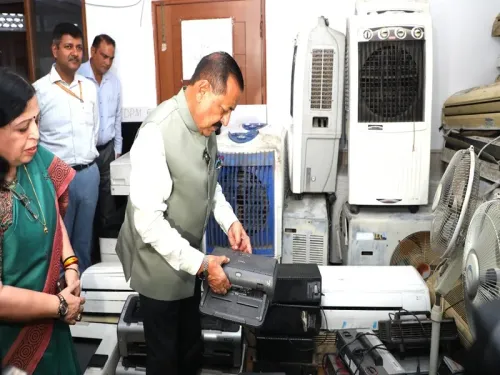What Measures are Being Taken to Clean the Yamuna?

Synopsis
Key Takeaways
- Yamuna River symbolizes faith and is prioritized for cleanliness.
- 32 real-time monitoring stations will be set up.
- A comprehensive plan will address drinking water and sewage systems.
- Long-term vision for water management is essential.
- Technology will enhance the cleaning efforts.
New Delhi, May 22 (NationPress) The Yamuna is more than just a river; it holds deep spiritual significance for many. Hence, ensuring its cleanliness remains a top priority for the government led by Prime Minister Narendra Modi, stated Home Minister Amit Shah during his review of the initiative to establish 32 real-time water quality monitoring stations.
During a crucial meeting, HM Shah advocated for a comprehensive strategy to clean the Yamuna, guarantee a reliable drinking water supply, and upgrade sewage systems in Delhi.
As per official reports, 10 of the water quality monitoring stations will be positioned along the Yamuna, while the other 22 will oversee water quality in major drains flowing into the river.
Key locations for these monitoring stations will include Okhla Barrage, ITO Bridge, Palla, ISBT Bridge, and Nizamuddin Bridge.
The meeting, presided over by HM Shah, saw the participation of Union Housing and Urban Affairs Minister Manohar Lal, Union Jal Shakti Minister C.R. Patil, Delhi Chief Minister Rekha Gupta, along with various senior officials from both the Central and Delhi governments.
HM Shah emphasized that the Ministry of Jal Shakti must formulate a Standard Operating Procedure (SOP) for all Sewage Treatment Plants (STPs), ensuring standards for their quality, upkeep, and discharge, which should also be communicated to other states.
He insisted that plans regarding the Yamuna, drinking water, and drainage in Delhi should be crafted with a vision spanning 20 years.
Highlighting the essential role of the Delhi Jal Board in the Yamuna's cleanup, he urged for its fortification, directing that all vacant positions within the Board be filled promptly.
HM Shah also pointed out the necessity of improving water distribution in Delhi, asserting that efficient water management is vital to ensure a consistent drinking water supply throughout the city.
He called for the Jal Board to bolster the water distribution infrastructure while also addressing pipeline leakages.
Furthermore, HM Shah advocated for the adoption of state-of-the-art technology for desilting drains.









